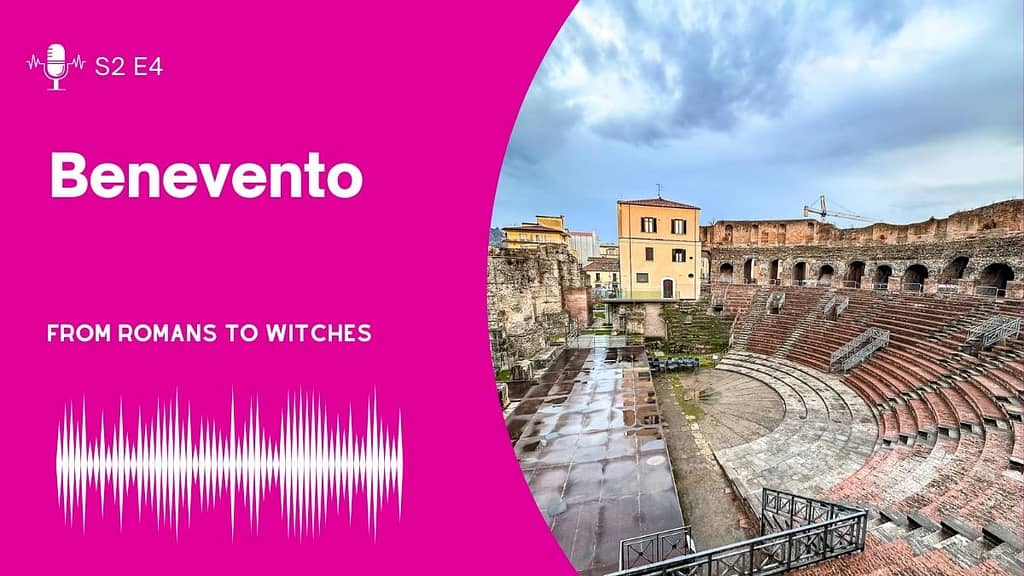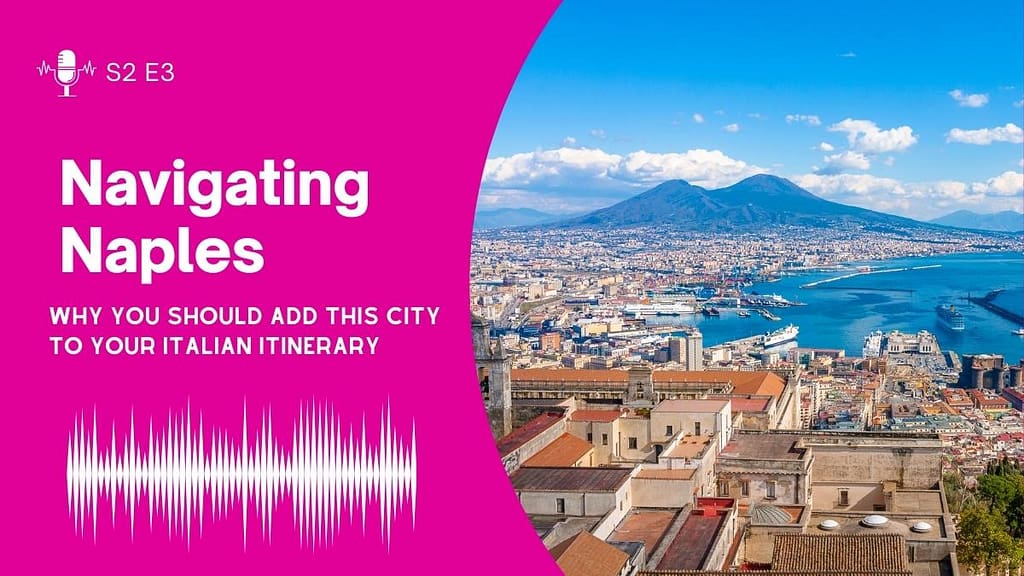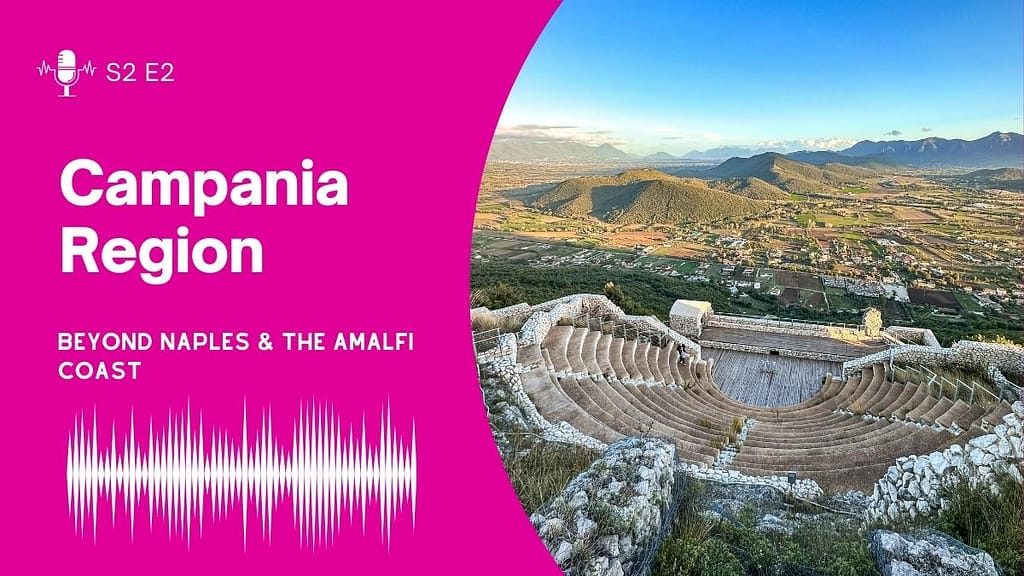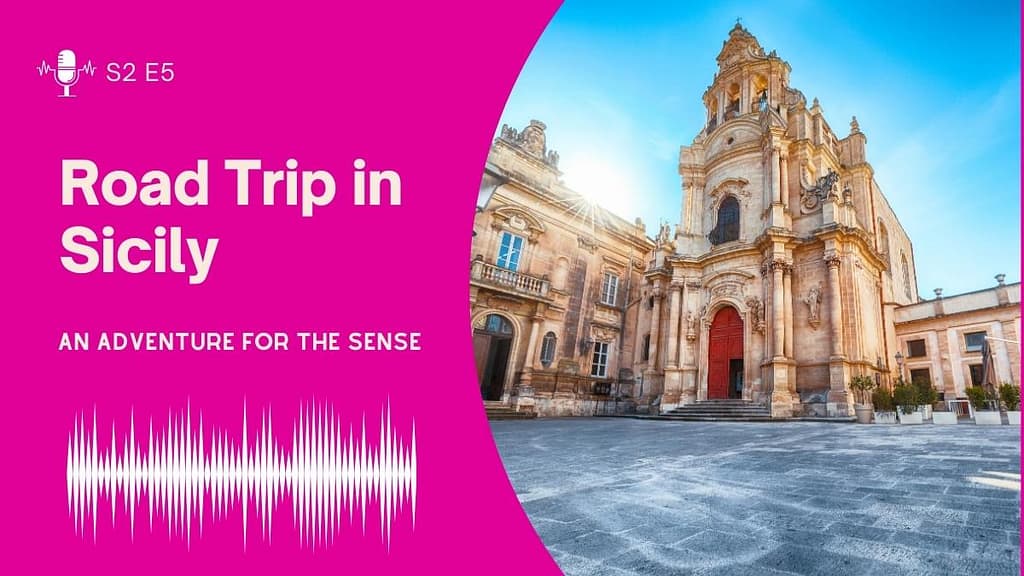Today, we’re taking you to the heart of the region of Campania, to a very underrated city that’s not far from where we live – Benevento. Here you’ll find Roman architecture, Egyptian obelisks, and cool churches. Benevento is also known as the City of Witches (yes, those devil-worshipping kind people used to scare children) and the Strega liqueur, named after them.
Discover what makes Benevento a great destination to explore and why we think you should add it to your next Italian itinerary.
Benevento Italy, a city with a captivating history
Originally, Benevento was a vital outpost for the Samnites, an ancient Italic people. The Romans conquered it in 268 B.C. and reincarnated it as a pivotal city within the Roman Empire named Beneventum. It was a major Roman city on the Appian Way, which connected Rome with other parts of the peninsula and was a major trade route.
Benevento was even known as the City of Trajan – the Roman emperor known for expanding the empire’s boundaries, enacting an ambitious building program and expanding social welfare. The legacy of Rome is palpable in its architecture, with the majestic Arch of Trajan standing as a testament to the city’s past glory.
In 1077, Benevento became a Papal enclave, directly governed by the church, a status it maintained until the unification of Italy in 1860. This ecclesiastical dominion marked Benevento’s development distinctly from regions ruled by the nobility or other powerful families, such as the Medici in Florence. While cities like Florence thrived under the influence of banking and the Renaissance art patronage of their ruling families, Benevento developed a unique cultural and religious identity deeply intertwined with the church’s power.

Under papal rule, Benevento became a center for religious scholarship and a haven for the esoteric and mystical, perhaps contributing to its lasting association with legends of witchcraft. This period also saw the construction of significant religious edifices, including the majestic Cathedral of Santa Maria Assunta. The city’s history as part of the Papal States also meant that its political and social evolution took a different course compared to those regions ruled by secular or noble families, often involving intricate power dynamics with the church at the center.
The witches of Benevento and the walnut tree
Benevento’s reputation as the city of witches is intricately linked to the legendary Walnut Tree, a symbol enveloped in lore and dark tales. According to popular belief, this ancient tree was the meeting place for witches who gathered to practice their rites and pay homage to the devil. This legend finds its roots in the Lombard’s pagan rituals, which predated Christian dominance in the region. The Lombards, known for their warrior culture, also held deep pagan beliefs, including the worship of trees and natural spirits, which could have easily morphed into the tales of witchcraft associated with the Walnut Tree.
The Walnut Tree’s significance in Benevento’s history is emblematic of the transition from paganism to Christianity, where pagan sites often became Christianized or, as in this case, vilified in folklore. Over time, the tree not only symbolized the city’s pagan past but also served as a stark representation of the fear and misunderstanding surrounding pagan practices.

The idea of witches didn’t sit well with the church, so, of course, they persecuted women accused of witchcraft for a few centuries before they finally decided around the 17th century that those women weren’t witches worshipping the devil, but rather these so-called hallucinations of the devil were happening because these women were actually mentally ill. Of course, they were. And this was the so-called Age of Enlightenment.

The legend of the witches and the Walnut Tree has left an indelible mark on Benevento’s cultural and historical fabric. It reflects the complex interplay between pagan and Christian beliefs, the power of folklore in shaping perceptions, and the consequences of those beliefs on the city and its people, particularly women. Benevento’s identity as the city of witches remains a compelling aspect of its allure, drawing visitors intrigued by its mystical past and the tales that have transcended centuries.
- Strega Liqueur: A signature spirit of Benevento, Italy. Its name translates to “witch” in Italian and is a nod to the city’s mystical heritage. The liqueur boasts a distinctive blend of herbs and spices, including saffron, which gives it a unique yellow colour, mint, fennel, and several more, each contributing to its complex, slightly sweet flavour.
- Museum of the Witches (Museo delle Streghe): Benevento houses this unique museum dedicated to its legendary witchcraft history. The Museum of the Witches offers an immersive exploration of the city’s past, highlighting the supernatural folklore surrounding the Walnut Tree and the witch trials. It features exhibits of the rituals, beliefs, and symbols associated with witchcraft in Benevento, as well as the broader European context of witch hunts.
Must-visit places and experiences in Benevento
For a small city, Benevento has a lot to offer visitors. Here are our top picks for what to see and do in Benevento during your visit:

- Roman Theatre of Benevento: One of the city’s most prominent ancient structures, the Roman Theatre of Benevento dates back to the 2nd century BC. It was built during the reign of Emperor Hadrian and could seat up to 10,000 spectators. It is still used for events and performances, providing a unique cultural experience within an impressive historical setting.
- Arch of Trajan (Arco di Traiano): Located in the heart of Benevento, the Arch of Trajan is an iconic symbol of the city’s Roman past. Built around 114 AD to honour Emperor Trajan’s victory over Dacia, this impressive structure stands over 15 meters high. It features intricate reliefs depicting scenes from Trajan’s conquests.
- Roman Forum with the Arco del Sacramento: Surrounded by modern housing is Benevento’s ancient Roman forum, once the heart of political and social life in the city. You can walk around the site on walkway installations and explore this archaeological site with the Arco del Sacramento at its entrance.
- Roman gates: The Ponte Leproso and Santi Quaranta are just two examples of the well-preserved Roman gates in Benevento.
- Egyptian Obelisks – one in Piazza San Sofia and the other along the Corso Garibaldi
@amongstromans If you’re into ancient ruins like me, you have to check out the Roman theatre in Benevento! Located in the Campania region, this mind-blowing amphitheater was built by Emperor Hadrian in the 2nd century AD. 🏛️ The theatre was used for plays and could hold between 10,000 and 15,000 spectators. Today, you can explore the stands and the stage and even wander through the same corridors ancient spectators once did. Benvento’s Roman Amphitheatre is a must-see destination that will take you to a different time. Save this post for later, and add Benevento to your next Italian itinerary! #CapCut #HiddenGem #italyadventures #discoveritalywithme #campania #fyp #historybuff #TravelItaly #italytiktok #benevento #campaniadavivere
♬ Città vuota – Mina
Here are some other (non-Roman) things to see in Benevento. We recommend you explore the historic city center with charming streets, squares, and interesting architecture. There are also a few interesting museums where you can get an insight into Benevento’s past.

- Benevento Cathedral (Duomo di Benevento): Originally built in the 11th century, this cathedral has undergone several renovations and additions. There is also an archeological site under the church, dating back 7,000 years. It’s believed to have been a pagan sanctuary.
- San Sofia Church (Chiesa di Santa Sofia): Built in the 8th century, this beautiful church is one of Italy’s oldest examples of Lombard architecture. Its interior boasts stunning frescoes and mosaics from different eras, making it a must-visit for art enthusiasts.
- San Sofia Cloister (Chiostro di Santa Sofia): Connected to the church, the cloister is a peaceful oasis amid the bustling city. Its beautiful architecture and relaxed atmosphere make it a popular spot for locals and tourists.
- Rocca dei Rettori: This medieval fortress offers breathtaking views of the city and surrounding landscape. Built in the 13th century, it served as a residence for various rulers. Today, it houses temporary exhibitions and events. It’s also the seat of the local government.
- Museo del Sannio: Housed in the former convent of San Domenico, this museum showcases artifacts and archaeological finds from the Samnite and Roman eras, giving visitors a glimpse into Benevento’s rich history.
- Hortus Conclusus Paladino: An open-air museum featuring sculptures and installations in a beautiful garden.
- Museo Arcos: The museum houses the Egyptian Section of the Sannio Museum with artifacts from the Benevento Temple dedicated to Isis and the Contemporary Art Section.
- Villa Comunale: A public park in the heart of Benevento. It is a popular spot for relaxing and unwinding and features beautiful gardens, a fountain and a gazebo.
Indulge in culinary and shopping delights
As we mentioned, Benevento is a great place to indulge in local flavours. Don’t forget to try the Strega (witch) liqueur, the walnut liqueur, and the cacchiotta cheese, or indulge in the local wine made with the Aglianico and the falanghina grapes.
Where to eat
Where to stay
Recommended tours
How to get there
The best way to reach Benevento from Naples is by renting a car or taking the train. The Campania region’s efficient rail service offers a convenient and scenic route, taking approximately 1.5 to 2 hours. Trains depart regularly from Napoli Centrale, the main train station in Naples, to Benevento Station. Be sure to check the latest train schedules and fares for the most updated travel information.
If you’re renting a car and driving, it should take you around 1 to 1.5 hours to get to Benevento from Naples. You can also take the bus via Caserta. Don’t want to drive? Book a private one-way transfer from Naples to Benevento.
How long should you stay
To fully experience what Benevento has to offer, we recommend a two-day/long weekend stay. This allows enough time to explore the historical sites and enjoy the local culture and cuisine.
Coming to Italy?
Benevento offers more than a peek into Italy’s storied past—it invites you to become a part of its continuing narrative. As we wrap up this episode, we urge you to witness firsthand the dance between history and legend. Book your wine tour to discover the hidden gems and uncork the spirit of Benevento. Taste the local wines, roam the ancient streets, and maybe, just maybe, feel the magic beneath the shadow of the Walnut Tree.
Thank you for joining us on this fascinating escapade. Don’t forget to share this episode with fellow history enthusiasts and cultural connoisseurs.




